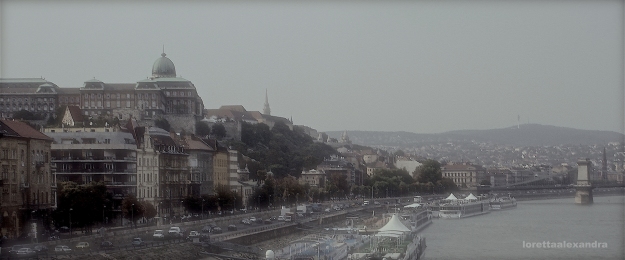
…The Strange Tale of “Gloomy Sunday”
In Vienna, a teenage girl drowned herself while clutching a piece of sheet music. In Budapest, a shopkeeper killed himself and left a note that quoted from the lyrics of the same song. In London, a woman overdosed while listening to a record of the song over and over.
The piece of music that connects all these deaths is the notorious “Gloomy Sunday.” Nicknamed the “Hungarian suicide song,” it has been linked to over one hundred suicides, including the one of the man who composed it.
Of course, this might all be an urban legend.
One thing’s for sure, though. “Gloomy Sunday’s” composer Rezso Seress did take his life, and the success of his greatest hit may have been a contributing factor.
Sad Songs Say So Much
In 1933, the Hungarian-born Seress (née Rudi Spitzer) was a 34-year-old struggling songwriter.
Some accounts have him living in Paris, others Budapest. The story goes that after his girlfriend left him, he was so depressed that he wrote the melody that became “Gloomy Sunday.” A minor-key ribbon of blue smoke, the tune was given an equally melancholy lyric – in Hungarian – by Seress’s friend, the poet Laszlo Javor. Some reports claim it was Javor’s girlfriend who left him, inspiring the song as a poem first. Others say that Seress wrote his own lyric, about war and apocalypse, then Javor later changed it to a heartbreak ballad.
Whatever the case, “Szomorú Vasárnap,” as it was titled, didn’t make much of a splash at first. But two years later, a recorded version by Pál Kálmar was connected to a rash of suicides in Hungary. The song was then allegedly banned. Short of learning Hungarian and trawling through Budapest newspapers from the 1930s, it is impossible to verify any of this (Hungary does historically have one of the higher suicide rates in the world – approximately 46 out of every 100,000 people take their own lives there every year).
But it certainly makes for a juicy story. And it did at the time, too, because music publishers from America and England soon came calling.
Tin Pan Alley tunesmith Sam M. Lewis and British theater lyricist Desmond Carter each wrote an English translation of the song. It was Lewis’ version, recorded in 1936 by Hal Kemp and his Orchestra, that caught on.
Sam Lewis, best known for chirpy hits such as “I’m Gonna Sit Write Down And Write Myself A Letter,” stayed close to the bitter despair of the original. Here’s his second verse:
“Gloomy is Sunday, with shadows I spend it all
My heart and I have decided to end it all
Soon there’ll be candles and prayers that are sad, I know
Let them not weep, let them know that I’m glad to go
Death is no dream, for in death I’m caressing you
With the last breath of my soul I’ll be blessing you.”Lewis did make one concession to commerciality by tacking on a third verse that beamed a ray of light into the tune’s darkness. It began:
“Dreaming, I was only dreaming.
I wake and I find you asleep
In the deep of my heart, dear.”In 1941, Billie Holiday recorded the definitive version of “Gloomy Sunday.” Having the hard-living Lady Day associated with the song certainly upped the tragedy ante.



Why Budapest?
A movie and a song had everything to do with my desire to go there. When the subject of a trip abroad in the spring of 2011 first came up, I kept Budapest in mind, thinking some way, some how we could squeeze into our itinerary a few days to this city with the Danube running through it. For inspiration, I downloaded various versions of Gloomy Sunday, including one by Billie Holiday, made a compilation CD of 5 or 6 renditions—Paul Robeson and Artie Shaw among them—and played it endlessly over a period of months, as I sat at my computer researching, and plotting the course of our trip. As it turned out, Budapest fit nicely into the circular route mapped out, fitting between our visits to Kraków and Milan—from Milan it was back to Madrid, and lastly, to Paris, our gateway to Europe upon arriving, and the city from which we departed for the States and home.
During the 5 week journey, I documented our trip in photographs—somewhere in the neighborhood of four thousand photographs were shot. Amassing that large a collection, the matter became, how best to organize and show them to family and friends? First thought was simply, make a DVD. But then, of course, a description for each photo would be necessary, and that would require some backtracking and research to get proper names and exact locations of places. Hmm, to tie the presentation together and complete the narrative, wouldn’t it be nice, to pair the visuals with music? Thus, a soundtrack was created. At wrap, a two part, 4 disc video had been produced, complete with an ending of scrolling screen credits that fades to black to the tune of Gloomy Sunday, sung by Heather Nova.





